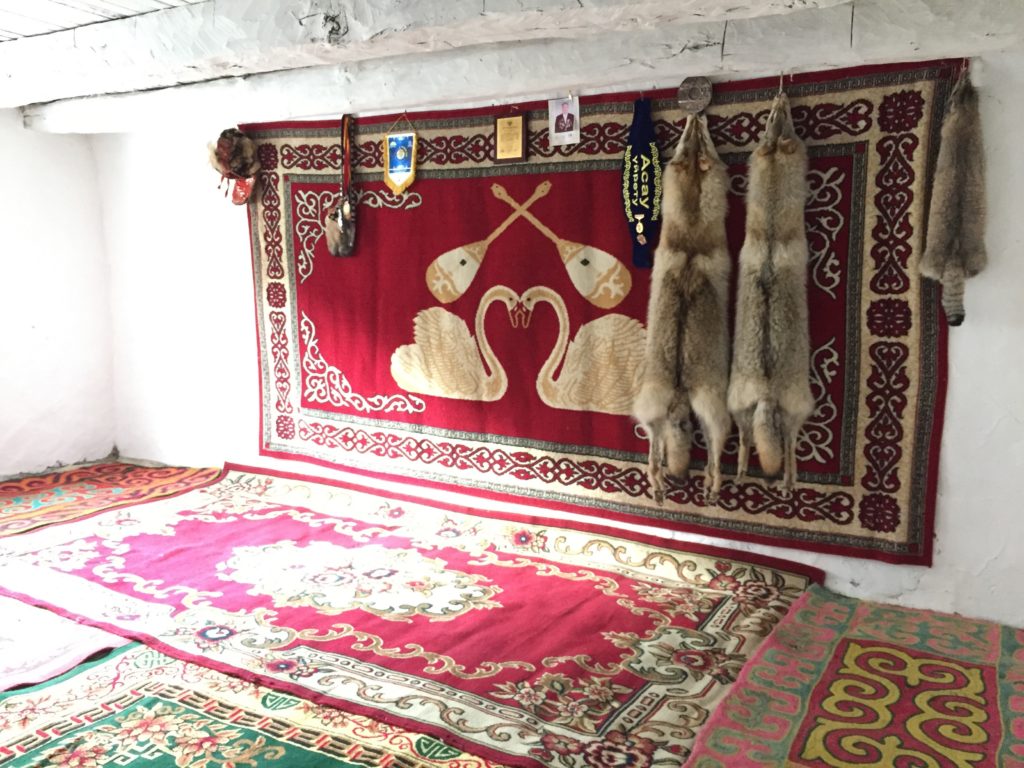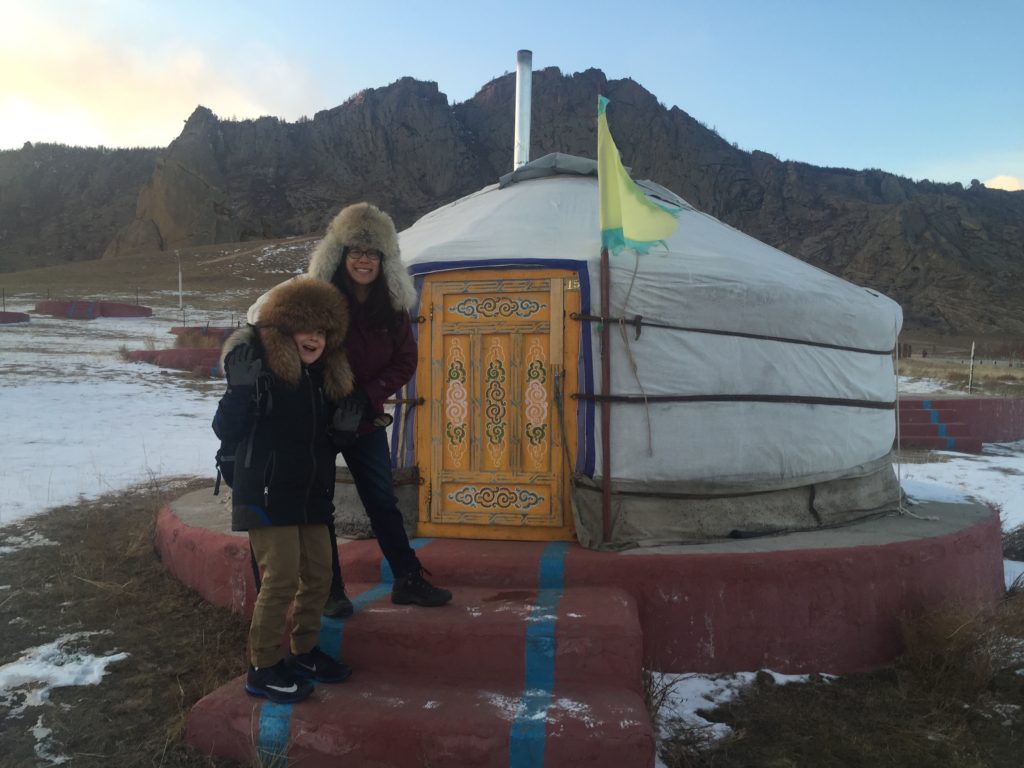If there is beauty in simplicity then it is surely epitomized by the lifestyles of the nomads of Mongolia, one of the few authentically nomadic peoples left. We were fortunate to experience the hospitality of three different nomad families and also inhabited a ger on our own.
Having to move your belongings every season and having a limited space to fit them into sharpens the precision with which these families weigh their possessions. Everything has a purpose and a value, and beauty is one of those.
Far from these homes being acetic spaces, they resonate with personality and practicality. In the winter homes of the two Kazak families we stayed with in Altai, wall hangings hand-embroidered by the women created bright backdrops for photos. Huge wolf and fox skins and even a prize owl were mounted on the walls, along with objects of pride like wrestling awards, academic achievement certificates, and yes, name tags for this year’s Sundance Film Festival. We lived with the family of Aisholpan, the subject of the new documentary ‘The Eagle Huntress.’
The same was true of the ger home of the Mongolian nomads we were welcomed into, below. A ger is a traditional, portable, felted tent dwelling used in warmer weather. (In other countries this is also known as a yurt.) The multi-generational family shared a spacious ger which also had in common with the Kazak homes, thick carpets and brightly decorated wooden pieces of storage: a dresser where delicacies like dried curd and cookies as well as bowls for milk tea were stored, a large wooden kist, and a smaller wooden box for storing precious belongings.
One of the few differences lay in the division of space. In a ger, you never pass between the central portals, and the left and right are divided into masculine and feminine zones, with the kitchen area on the right and the seating areas for guests on the left. The Mongolian family also had a Bhuddist home altar, unsurprisingly absent in the Kazak homes given they follow Islam.
Economies and scale
Our time in the homes of these welcoming families led us to some insights into wants versus needs. Or rephrased in a click baitish way, “6 Things I learned from nomad families.”
1. You don’t need The Container Store, you need less stuff!
One of the Bhuddist sayings we passed on our way to a mountainside temple cautioned against the accumulation of worldly possessions, lest they begin to dictate your life rather than the other way around. That’s not a worry any of these families have, but it’s something that may give many of us pause. It made C and I aware of the sometimes absurd level of redundancy we have in our belongings — how many spare umbrellas does one family of three need? (And why do you never have one on you when you actually do need it?!)
2. Multipurpose magic
Space is an ever-movable feast in a nomad home. Tables fold, chairs stack, sofas do double duty as beds, and stacks of mattresses that serve as a couch by day and morph into beds for three at 10:30pm. In this context, multitasking truly is a beautiful thing.
3. Human-centred design
There is no carbon fibre, high-tech tent that can hold a candle to a ger, with a centuries-old design that can suit all family sizes, home-gathered felt that blocks out fierce winds, and a structure that creates a real home in hours.
Each piece is lovingly crafted and symbolic — two pillars representing parents, a circle with radiating ribs for the roof also symbolic of the sun, and walls that serve a multitude of functions besides being the wall.
I wish I could one day participate in putting one up, which is an everyone welcome communal activity.
4. Getting under foot
There are probably few flooring materials that can remain as cheerful and clean up as well as linoleum after taking a beating from hot pots, everyone walking everywhere, and even the odd, projectile eagle poop that we witnessed! I have a new-found appreciation for this off-maligned and incredibly resilient material.
5. Close quarters make for close families
Hate to say it, but in today’s real estate escalation of mega-mansions, square footage might be over rated. Not only are the contained nomad homes easy to keep clean, it’s impossible not to know exactly what’s going on with everyone. And I do mean everything. In the evening we were seven people sleeping in the single living space, making everything communal including conversations, disagreements between parents, children’s upsets, triumphs… even the elaborately curtained-off double bed for the newly-wedded couple provided only so much privacy.
6. Privvy privacy
And speaking of privacy, if you need to find it, simply duck and step out the front (and only) door. You can storm off in a huff and walk it off for hours without meeting another person… although you may well meet a few herds of yaks, goats, sheep, camels, cows and horses.
Going to the privvy itself offers the same counter-intuitive privacy of a vast and open landscape, with a thigh-high screen behind you. The setting, paired with a frigid wind encourages economy in all things including answering nature’s call.





Comments are closed